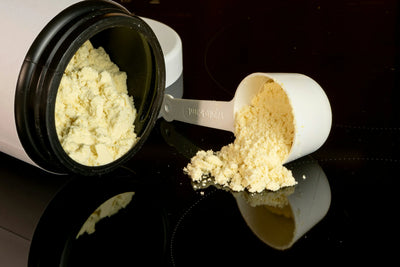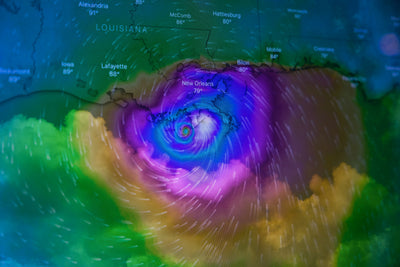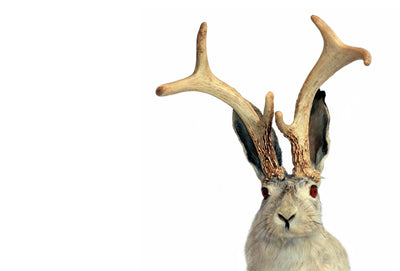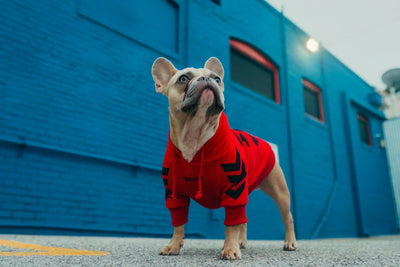Introduction
Whether you're an active small dog or an imposing large breed, healthy muscle not only makes your dog look stronger, it also improves their vitality, stamina and quality of life. A scientifically based muscle building program can help your furkid run more in the park, play more at home, and even show more confidence in everyday life.
Dog Muscle Builder: 5 Safe Diet & Exercise Plans for All Breeds
We've compiled a list of five safe diet and exercise programs for all dog breeds to help your dog gain muscle and renew his vitality!
1. Scientific Diet Program: Fuel for Muscle Growth
Muscle growth cannot be achieved without balanced nutritional support. Whether it's a young energetic dog or an older dog with a steady pace, a reasonable diet program can provide them with the energy and raw materials they need to build muscle.

(1) High Protein Diet: The “Building Blocks” of Muscle Growth
Protein is at the heart of muscle growth, providing your dog with the amino acids needed to repair and build muscle. Here are some high-quality protein sources for all breeds of dogs
Chicken: low-fat, high-protein chicken breasts are easy to digest and ideal for dogs in the muscle-building phase.
Beef: rich in iron and zinc, it not only supports muscle growth but also prevents anemia and keeps your dog energized.
Fish: Fish rich in omega-3 fatty acids, such as salmon or cod, promote joint health and are especially suitable for dogs that exercise a lot.
Eggs: Hard-boiled eggs are an affordable source of protein, and the nutrients in the yolks can also help make your dog's coat shine.
Beans: black or red beans provide plant-based protein and are good to add to the diet occasionally for variety.
Adjust daily protein intake according to your dog's weight and activity level, and it is recommended to consult your veterinarian to determine the optimal ratio.
(2) Healthy fats: for both energy and shine
Fats provide long-lasting energy for your dog's exercise while keeping the skin and coat healthier. Here are a few sources of healthy fats:
Fish oil: rich in omega-3 fatty acids, it reduces inflammation and supports joint and muscle health.
Chicken oil: added in small amounts enhances food palatability and provides your dog with high-density energy.
Olive oil: Add a few drops of olive oil to dog food occasionally to add a healthy flavor to the diet.
Pay attention to controlling the amount of fat to avoid excess leading to weight gain and affecting the effect of muscle building.
(3) Vitamins and minerals: comprehensive support for muscle health
Vitamins and minerals are essential in muscle synthesis, repair and overall metabolism. Here are some key nutrients:
Calcium and phosphorus: strengthen bones and teeth, providing solid support for your dog's exercise.
Vitamins E and C: act as antioxidants to protect muscles from sports damage while boosting the immune system.
Zinc: promotes wound healing and cellular repair, aiding muscle recovery.
These nutrients can be supplemented by high quality dog food or natural ingredients such as green vegetables.

(4) High quality carbohydrates: a stable source of energy
Carbohydrates provide sustained energy for your dog's daily activities and exercise. Choosing carbohydrates with a low glycemic index will keep your dog's energy stable:
Brown rice: rich in fiber, provides slow-release energy for prolonged activity.
Oats: easy to digest, rich in dietary fiber and promotes intestinal health.
Sweet potatoes: delicious and nutritious, rich in vitamin A and a favorite energy source for dogs.
Adding these ingredients in moderation will give your dog more stamina during workouts.
(5) Nutritional supplements: the “secret weapon” for muscle building
For the needs of muscle building, the appropriate nutritional supplements can be twice the result with half the effort:
Branched Chain Amino Acids (BCAA): promote muscle synthesis, speed up recovery, suitable for dogs with high intensity training.
HMB (β-hydroxy-β-methylbutyric acid): reduces muscle breakdown, especially for older dogs or dogs in recovery.
Probiotics: improves intestinal health, increases efficiency of nutrient absorption, and maximizes the effectiveness of the diet.
Always consult your veterinarian before using a supplement to ensure it is appropriate for your dog.
2. Scientific Exercise Programs: Getting Your Muscles Moving
While diet provides the raw material for muscles, scientific exercise is the key to making muscles strong. Through a variety of exercises, the dog's physical ability and body shape can be improved.
(1) Aerobic Exercise: Enhance Cardio and Endurance
Aerobic exercise can enhance your dog's cardiorespiratory function and lay the foundation for subsequent training. Here are a few suitable choices:
Jogging: 30-60 minutes of even-speed jogging per day is suitable for most dog breeds. Choose grass or soft ground to protect joints.
Swimming: a low-impact, full-body workout, especially for dogs with sensitive joints or older dogs. Whether it's a lake or a pet pool, swimming gives your dog a happy workout.
Brisk Walking: Ideal for small or older dogs, brisk walking for 30-45 minutes a day can gently improve endurance.
Gradually increase the exercise time according to your dog's size and stamina.
(2) Strength Training: Building a Strong Body
Strength training can directly stimulate muscle growth and enhance your dog's strength and coordination:
Rally: Use a sturdy rope or toy to play pulling games with your dog to exercise bite force and limb muscles while enhancing interactive fun.
Backpack training: Use a professional dog training backpack and start with 1-2% of your body weight and gradually increase the load to build muscle strength.
Hill Climbing: Walking or jogging on sloping terrain can effectively exercise the hind legs and core muscles.
Strength training needs to be gradual, avoiding overweight or too rapid increase in intensity.
(3) explosive force training: stimulate muscle potential
Explosive strength training can stimulate the growth of fast muscle fibers and improve the dog's agility:
Running back and forth: In a distance of 10-15 meters, use toys or snacks to guide the dog to run back and forth quickly to enhance the explosive force and speed.
Jumping training: Set up 15-30cm high obstacles to encourage your dog to jump and exercise their leg muscles.
Remember to reward your dog after training to keep them enthusiastic.
(4) Flexibility Training: Improve Joints and Mobility
Flexibility training can improve your dog's joint flexibility and reduce sports injuries:
Yoga poses: Imitate the “Downward Facing Dog” or “Cat and Cow” poses, suitable for small dogs, for 10-15 minutes each time to help relax the body.
Stretching: 5-10 minutes of gentle stretching after each workout to help muscles relax and prevent stiffness.
3. Cautions: Safety First, Health First
A scientific muscle building program requires care and patience, here are some key reminders:
Avoid overfeeding: Excessive food may lead to obesity and offset the effect of muscle building. Follow the principle of “small amount, many meals” to control the daily intake.
Exercise moderately: Excessive exercise can lead to muscle strain or fatigue. Observe your dog's condition and rest when you feel tired.
Regular checkups: Take your dog for annual checkups to detect potential health problems and make sure they are fit for muscle building training.
Consult your veterinarian: Before starting a new diet or exercise program, consult your veterinarian to make sure the program is suitable for your dog.
4. Example of A Complete Muscle Building Program
The following is an example of a muscle building program that is suitable for most dog breeds:
Diet: Provide a high protein food (e.g., chicken, salmon) daily with appropriate amounts of fish oil and probiotics, and add brown rice or sweet potatoes to ensure energy supply.
Exercise: 30 minutes of jogging or brisk walking per day, rally or pack training 2-3 times per week, and 5-10 minutes of stretching after each workout.
Monitoring: Observe your dog's weight and muscle condition weekly, record progress and adjust the program if necessary.
With a scientific diet and exercise program, your dog will not only have toned muscles, but will also glow with more energy and confidence. Whether it's exploring the outdoors with you or romping around the house, a healthy dog will always add fun to life. Before you start, remember to consult your veterinarian to make sure the program is right for your furry child. Let's work together for your dog's health and happiness!
How to Build Muscle on a Dog: Step-by-Step Guide for Stronger Pets
Doesn't it make you feel especially happy to watch your dog run through the grass or walk with you with energy? A scientifically based muscle building program will not only give your dog a fitter physique, but it will also improve their strength, endurance, and overall sense of well-being. Whether you're an active small dog, an imposing large breed, or a furry child entering old age, healthy muscles give them more energy and confidence. Here's a detailed step-by-step guide that takes you through a step-by-step process to help your dog safely build muscle and start a stronger life!

Step 1: Assess Your Dog's Health
Before embarking on a muscle building journey, it's crucial to make sure your dog is in the right physical condition for the new program. A healthy start is the foundation for success!
(1) Veterinary checkup: for muscle building
Take your dog to the veterinarian for a thorough physical exam to check heart, joint, and blood markers to rule out chronic diseases or underlying health problems. The vet can also provide personalized diet and exercise advice based on your dog's age, size and health to ensure a safe and effective muscle building program.
(2) Setting clear goals: Tailoring to the dog's needs
Different dogs have different needs. Is your goal to give an athletic dog a boost in endurance? Is it to help a senior dog build fitness? Or do you want your dog to have a more athletic appearance? With a clear goal in mind, you can tailor your program more specifically and get twice the results with half the effort.
Step 2: Optimize Your Diet
A scientific diet is the cornerstone of muscle building, providing your dog with the “fuel” needed for muscle growth. Here are some nutritional tips for building a strong body:
(1) High protein diet: the “building material” for muscle growth
Protein is the core of muscle growth. High quality protein provides dogs with the amino acids needed to repair and build muscle. The following foods are recommended:
Chicken: Chicken breast is low fat and high protein, easy to digest, suitable for all breeds of dogs.
Beef: rich in iron and zinc to prevent anemia and aid in muscle growth.
Fish: Salmon or cod is rich in omega-3 fatty acids, protects joints, and is suitable for dogs who exercise intensely.
Eggs: Hard-boiled eggs are economical and nutritious, and the yolks add shine to the coat.
Beans: Black or red beans provide plant-based protein and can be added in moderation to add variety to the diet.
Adjust the protein ratio according to your dog's weight and activity level, and it is recommended to consult your veterinarian to determine the optimal intake.
(2) Healthy fats: a source of energy and luster
Fats provide your dog with long-lasting energy while keeping the skin and coat healthier. The following are sources of good fats:
Fish oil: rich in omega-3 fatty acids that reduce inflammation and support joint health.
Chicken oil: added in small amounts enhances food palatability and provides high-density energy.
Olive oil: add a few drops to your dog's food occasionally to add a healthy flavor to your diet.
Be careful to control the amount of fat to avoid excess leading to obesity.
(3) Vitamins and Minerals: Supporting overall health
Vitamins and minerals are essential in muscle synthesis and repair:
Calcium and phosphorus: strengthen bones and provide support for exercise.
Vitamins E and C: antioxidants, protect muscles from exercise damage and boost immunity.
Zinc: promotes wound healing and cellular repair, aiding muscle recovery.
Supplement these nutrients with high quality dog food or natural ingredients such as green vegetables.
(4) High quality carbohydrates: stable energy supply
Carbohydrates provide energy for your dog's activity and exercise, and the following low glycemic index options are recommended:
Brown rice: provides slow-release energy and is suitable for prolonged activities.
Oats: rich in dietary fiber to promote digestion and maintain intestinal health.
Sweet potatoes: delicious and rich in vitamin A, a favorite energy source for dogs.
(5) Nutritional supplements: “gas pedal” for muscle building
Appropriate supplements can enhance the effect of muscle building:
Branched Chain Amino Acids (BCAA): promote muscle synthesis and accelerate recovery.
HMB (β-hydroxy-β-methylbutyric acid): reduces muscle breakdown, especially for older dogs.
Probiotics: improves intestinal health and increases the efficiency of nutrient absorption.
Always consult your veterinarian before using a supplement to ensure it is appropriate for your dog.
Step 3: Develop A Scientific Exercise Program
Diet provides the raw material for the muscles, and exercise really gets them “moving”. The following exercise programs are suitable for all dog breeds:
(1) Aerobic Exercise: Enhancing Cardio and Endurance
Aerobic exercise improves cardiorespiratory function and lays the foundation for subsequent training:
Jogging: 30-60 minutes of even-paced jogging per day is suitable for most dog breeds. Choose soft surfaces to protect joints.
Swimming: Low-impact, full-body exercise suitable for sensitive joints or older dogs.
Brisk walking: suitable for small or older dogs, 30-45 minutes per day, gentle to improve endurance.
(2) Strength Training: Building a Strong Body
Strength training directly stimulates muscle growth:
Rally: Play a pulling game with your dog using a sturdy rope to exercise bite force and limb muscles.
Backpack training: Use a professional training backpack and start with 1-2% of your body weight and gradually increase the load.
Climbing training: Walk or jog on a ramp to strengthen the hind legs and core muscles.
(3) Explosive strength training: stimulate muscle potential
Explosive strength training stimulates the growth of fast muscle fibers and improves agility:
Folding and running: set a distance of 10-15 meters, use toys or snacks to guide the dog to run back and forth quickly.
Jumping training: set up 15-30 cm high obstacles to encourage the dog to jump.
(4) Flexibility Training: Protecting Joints and Muscles
Flexibility training reduces sports injuries and improves athletic ability:
Yoga poses: Imitate “Downward Facing Dog Pose” or “Cat and Cow Pose”, suitable for small dogs, 10-15 minutes each time.
Stretching: 5-10 minutes of gentle stretching after exercise to relax muscles.
Step 4: Continuous Monitoring and Adjustment
Muscle building is a dynamic process that requires regular assessment and optimization:
(1) Regular monitoring: Keep an eye on your dog's changes
Weight and body fat: Weigh the dog weekly and record changes in body fat to ensure muscle gain rather than just weight gain.
Muscle mass: assess muscle firmness and volume changes by touch and observation.
Behavior and energy: Is the dog more active and willing to play? These are all signs of good health.
(2) Flexible Adjustment: Tailor-made for your dog
Adjust diet or exercise intensity based on monitoring results. If muscle growth is slow, increase protein intake or training frequency; if the dog is fatigued, reduce exercise appropriately.
Step 5: Precautions to ensure safety
A scientific muscle building program requires care and patience:
Avoid overfeeding: overdiet may lead to obesity and counteract the muscle building effect.
Moderate exercise: Avoid overtraining, observe the dog's state and rest in time.
Regular medical checkups: Yearly checkups to detect health problems in time.
Consult a veterinarian: Before a new program, consult a veterinarian to ensure it is appropriate for your dog.
Through scientific diet, exercise and continuous monitoring, your dog can have a stronger body and a more fulfilling life. Imagine them splashing around in the grass or walking with you with vigor - it's all worth the effort! Here is a simple sample plan:
Diet: Provide daily high-protein foods such as chicken and salmon with fish oil and brown rice to ensure balanced nutrition.
Exercise: 30 minutes of jogging per day, rally or pack training 2-3 times per week with 5 minutes of stretching at the end.
Before you start, remember to consult your veterinarian to tailor a program that works for your dog. Let's work together for the health and happiness of our fur kids!
How to Make a Pitbull Muscular: Breed-Specific Workouts & Joint Care Tips
Pitbulls are loved for their strong physiques and energetic personalities. They are naturally blessed with well-developed muscles and boundless energy, but with science-based diet, exercise, and joint care, you can further enhance their physique so they can show off their athleticism at the park or be more energetic and confident when accompanying you at home. Here's a guide to muscle building and joint care designed specifically for Pit Bulls to help your fur child become a healthier, stronger companion!
1. A Scientific Diet: “Powering” Muscle Growth
Muscle building in Pit Bulls requires strong nutritional support. A scientific diet program not only provides the raw materials for muscle growth, but also protects their joints and maintains their overall health.
(1) High Protein Diet: The “Building Blocks” of Muscles
Protein is the core of muscle growth, providing Pit Bulls with the amino acids needed to repair and build muscle. The following are high-quality protein sources for Pit Bulls:
Chicken: low-fat, high-protein chicken breasts are easy to digest and ideal for your Pit Bull's daily diet.
Beef: rich in iron and zinc to fuel muscle growth while preventing anemia and keeping your dog energized.
Fish: Salmon or cod is rich in omega-3 fatty acids, which not only support muscle repair but also protect joints.
Eggs: Hard-boiled eggs are economical, and the nutrients in the yolks also help make your Pit Bull's coat shine.
Adjust the proportion of protein according to your Pitbull's weight and activity level. It is recommended that daily protein make up 30%-40% of the diet and consult your veterinarian to determine the optimal intake.
(2) Controlling carbohydrates and fats: balancing energy supply
Pitbulls need the right amount of energy to support high-intensity activities, but too much carbohydrate may lead to weight gain and affect muscle tone. It is recommended to choose low glycemic index carbohydrates, such as brown rice or sweet potato, to provide stable energy. Also, add healthy fats in moderation:
Fish oil: rich in omega-3 fatty acids that reduce inflammation and support joint and muscle health.
Chicken fat: added in small amounts enhances food palatability and provides high-density energy.
Olive oil: Add a few drops occasionally to add healthy flavor.
Fat intake should be limited to 15-25% of daily calories to avoid excess leading to obesity.
(3) Nutritional supplements: double guarantee for muscle building and joints
For the physical needs of Pitbulls, appropriate supplements can enhance the results:
Branched Chain Amino Acids (BCAA): Promote muscle synthesis and accelerate recovery after workouts.
Omega-3 fatty acids: significant anti-inflammatory effects and joint protection for Pitbulls who exercise intensely.
Glucosamine and Chondroitin: prevent arthritis and maintain joint flexibility, especially beneficial for older Pit Bulls or dogs with joint problems.
Always consult your veterinarian before using supplements to ensure dosage and suitability.
2. Exercise Programs for Pit Bulls: Building a Strong Body
Pitbulls are naturally active, and a scientific exercise program can bring their potential into full play and build muscle strength while protecting joint health.
(1) Basic Exercise: Building a Good Physical Foundation
Basic exercise improves the Pit Bull's cardiorespiratory function and muscle tone in preparation for advanced training:
Walking: Take a 30-45 minute walk every day to maintain overall health and build muscle endurance. Choose grass or soft ground to reduce stress on joints.
Jogging/Running: If your Pitbull's fitness allows, a 30-minute jog or short sprint 3-4 times a week can significantly improve cardiorespiratory fitness and leg muscle strength.
Stair Climbing: Stair climbing training 2-3 times a week for 10-15 minutes each time, focusing on exercising the hind leg and hip muscles.
(2) Advanced Exercises: Stimulate Muscle Potential
Advanced exercise can further enhance the Pitbull's muscle strength and explosive power:
Weight training: Use a weighted undershirt designed for dogs, start with 1-2% of body weight and gradually increase to 5-10%, during walks or jogging. Watch your dog's reaction to avoid overweighting.
Rally Training: Use sturdy rally toys or weighted towing equipment (e.g., tires) for 10-15 minutes 2-3 times per week to exercise back, shoulder and core muscles.
Swimming: Swim for 20-30 minutes 1-2 times a week. This low-impact exercise provides a well-rounded workout and is especially suitable for Pit Bulls or older dogs with sensitive joints.

(3) Joint Care: Protecting Athletic Performance
Pitbulls' high-intensity exercise can put pressure on their joints, and scientific care can keep them flexible in the long run:
Warm-up and stretching: Warm up with a 5-minute slow walk before each workout, and perform gentle stretching (e.g. gently pulling the legs) for 5-10 minutes after the workout to prevent muscle and joint injuries.
Joint supplements: Take regular glucosamine and chondroitin supplements to help maintain healthy joint cartilage and reduce the risk of arthritis.
Weight management: Maintain an ideal body weight to reduce the burden on joints and prevent obesity from aggravating joint problems.
3. Precautions: Safety and Health Go Hand in Hand
A Pitbull muscle building program requires care and patience, and the following are key reminders:
(1) Avoid over-training
Although Pit Bulls are energetic, overtraining may lead to muscle fatigue or joint injury. Observe your dog's behavior and immediately reduce the intensity or increase the rest period if fatigue or discomfort occurs. It is recommended to exercise 5-6 days a week for a total duration of no more than 1 hour per day.
(2) Regular Health Checks
Take your Pitbull for a comprehensive physical examination every year to check joints, muscles and overall health. Early detection of problems (such as arthritis or heart disease) can prevent the muscle building program from negatively affecting health.
(3) Adequate rest and recovery
Muscles grow at rest, make sure your Pit Bull gets 10-12 hours of sleep a day. Provide a quiet resting environment after training to avoid frequent disturbances.
(4) Consult your veterinarian
Before starting a new diet or exercise program, consult your veterinarian to make sure the program is suitable for your Pit Bull, especially for those with joint problems or older dogs.
4. Example of A Complete Muscle Building Program
The following is an example of a muscle building program for a Pit Bull:
Diet: Provide a high protein food (e.g. chicken, beef, salmon) 30-40% of the diet daily with brown rice or sweet potatoes, and add fish oil and glucosamine supplements as appropriate.
Exercise: 30 minutes of jogging or walking per day, 2 weight training sessions (5% body weight undershirt), 2 tension training sessions of 10 minutes each, and 1 swimming session of 20 minutes each per week. Stretch for 5 minutes after each workout.
Monitoring: weekly weigh-ins to observe changes in muscle firmness and vitality and consult your veterinarian every 3 months to adjust the program.
With science-based diet, exercise and joint care, your Pit Bull can have a fitter and more energetic body. Imagine them running through the grass, confidently pulling a toy, or strutting their stuff on a walk with you - it's all worth the effort! Before you begin, remember to consult with your veterinarian to tailor a program that's right for your Pit Bull. Let's work together for the health and happiness of our fur kids and accompany them to shine their brightest!





